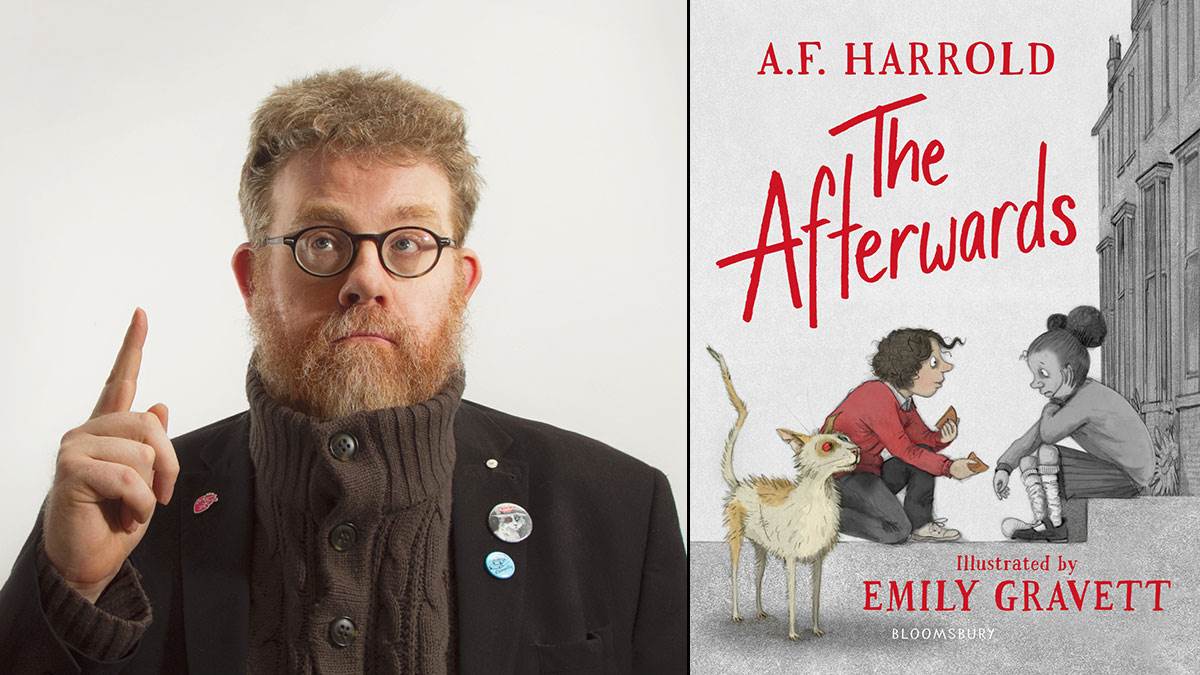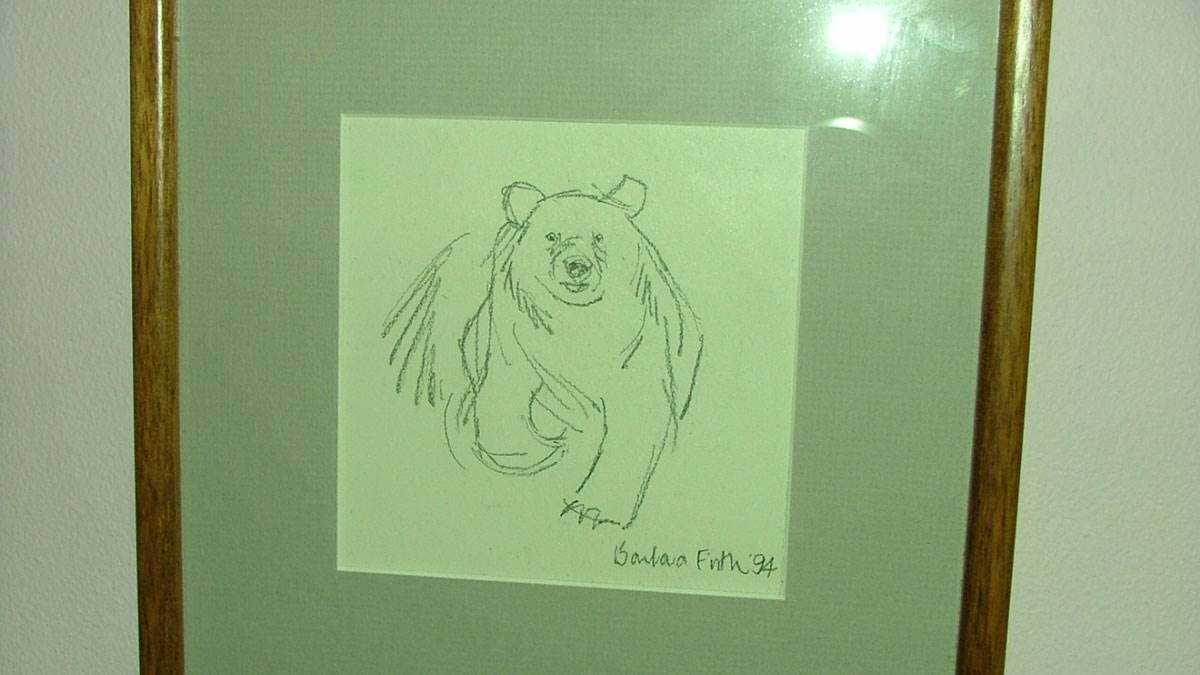'I hope Big Bear looks after you': How A. F. Harrold found comfort from Barbara Firth's bears
Published on: 15 November 2018 Author: A.F. Harrold
The Afterwards author A.F. Harrold didn't discover Martin Waddell's Little Bear stories until he was an adult, but Barbara Firth's wonderful illustrations have since had a huge impact on him...

When asked to write something about my favourite fictional duo, I immediately thought of Bill Watterson's Calvin and Hobbes.
And then I thought of Matilda and Miss Honey, taking tea in that cottage, and of the boy and his grandmother surviving the terrors of that witch-filled hotel, and of the inspiringly spiteful Twits.
I thought of Jim and Hilda in Raymond Briggs's Gentleman Jim and When The Wind Blows, and of the girl and the bear in The Bear, and of Briggs's parents in Ethel and Ernest.
I thought of Tintin and Snowy, or Tintin and Haddock, but finally I realised where I should have been looking all along...
I've recently moved my office out of the house, into a fancy shed at the end of the garden, and so I no longer look at these pictures as I sit at my desk, checking Twitter, but on the wall where my desk was hang a pair of original watercolour spreads by Barbara Firth, and in each of them are two bears.

When my first poetry collection Logic and the Heart was published in 2004, I sent a copy to Barbara via her publisher. That book, ostensibly a collection of love poems, had a number of pieces in there that referenced bears and bear-ish qualities, and I said to Barbara, in the covering note, that it was her bears that most often came to mind.
And that's because, unlike many bears that climb through the pages of children's books, and perhaps of picture books in particular, Barbara's are real. Although they behave and pose anthropomorphically, and the situations they're encountering are anthropomorphic, their physicality is all bear. Their claws are all bear. Their jowls and bellies are all bear.
But their relationship is pure unconditional love, whether they're siblings or father and son or something else, and it is inspiring.
I only discovered these books (worldwide bestsellers as they were) when I was working in a bookshop at the start of the century. They'd come too late for my childhood.
And so I only know them as a grown up, but they return me instantly to such a safe centre, a warm circle of childhood, of the curtains drawn on the winter dark and the family gathered around the telly, sharing moments... safe, unafraid, entire... Oh.
Nostalgia is a killer, isn't it?
Getting to know Barbara
I was amazed when I received a card back from Barbara, a lovely note and a pencil sketch of a bear (one that appears in the endpapers of her non-fiction bear book Bears in the Forest, written by Karen Wallace).
She had beautiful spiky handwriting, and I treasure each of the little letters she sent over the following handful of years. She encouraged me with the daft projects I was doing, homemade poetry things and strange music CDs, and although we never met that little epistolary exchange we had was so important,such an important voice whispering at my back.
In one of her last letters she wrote: 'I hope Big Bear looks after you.'

And that's the key on every page of those five bear books she and Martin Waddell created – Big Bear is there, looking after Little Bear, but not getting in the way. Little Bear is given the space to make mistakes while knowing all along Big Bear will be there. And does Little Bear mess up? Yes, of course he does. (Few images are more glorious-forlorn than Little Bear fallen in the water - cue a Goons impression.)
Finding comfort from Barbara's bears

After my mother died in 2010, I used a bit of my inheritance to buy a Firth original, a spread from You and Me, Little Bear.
Having written what I've just written about Big Bear and Little Bear's relationship, I suddenly see what I was doing in choosing that artwork to remember her by. My safety net had gone. There was no one there to deal with the grazed knees of life anymore. No home to return to when everything goes wrong.
I was pleased Barbara lived to see the first of my children's books, Fizzlebert Stump: The Boy Who Ran Away From the Circus (And Joined the Library), published, but I was deeply saddened the following year, 2013, when at her death at the ripe old age of 84-and-a-half there seemed to be so little mention anywhere, so little fuss made.
She deserved to be praised to the skies as one of our finest and greatest illustrators, but thankfully her and Martin's two bears continue to do that for her, walking in the lives of hundreds of thousands of kids and adults, shining a light in the dark, holding a hand out, person to person, carrying the littlest of us on their shoulders forwards through life.
Topics: Picture book, Classics, Animals, Features






Add a comment